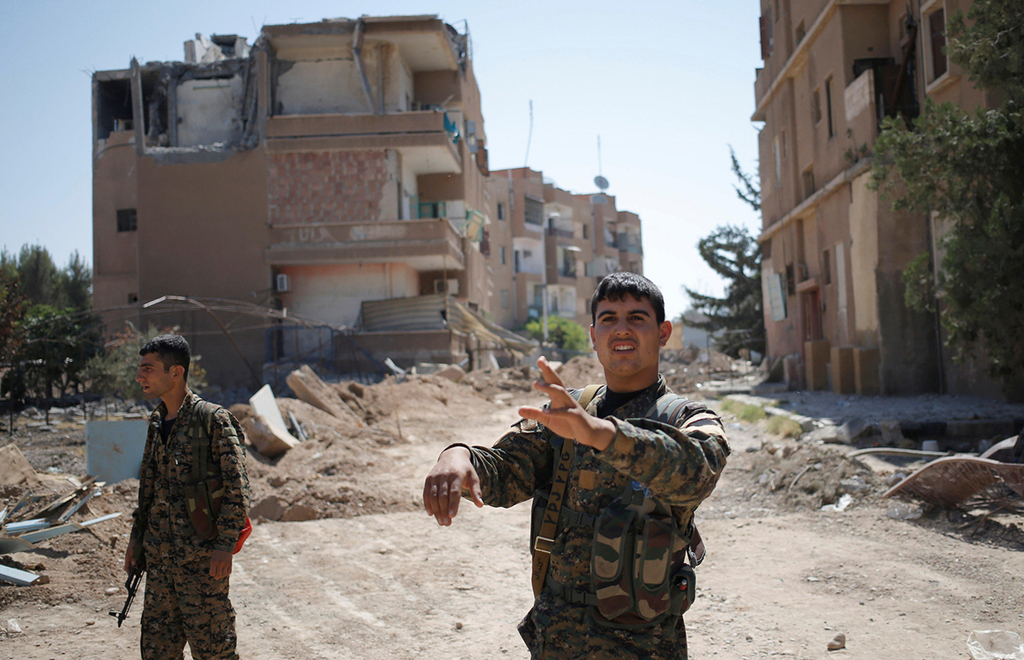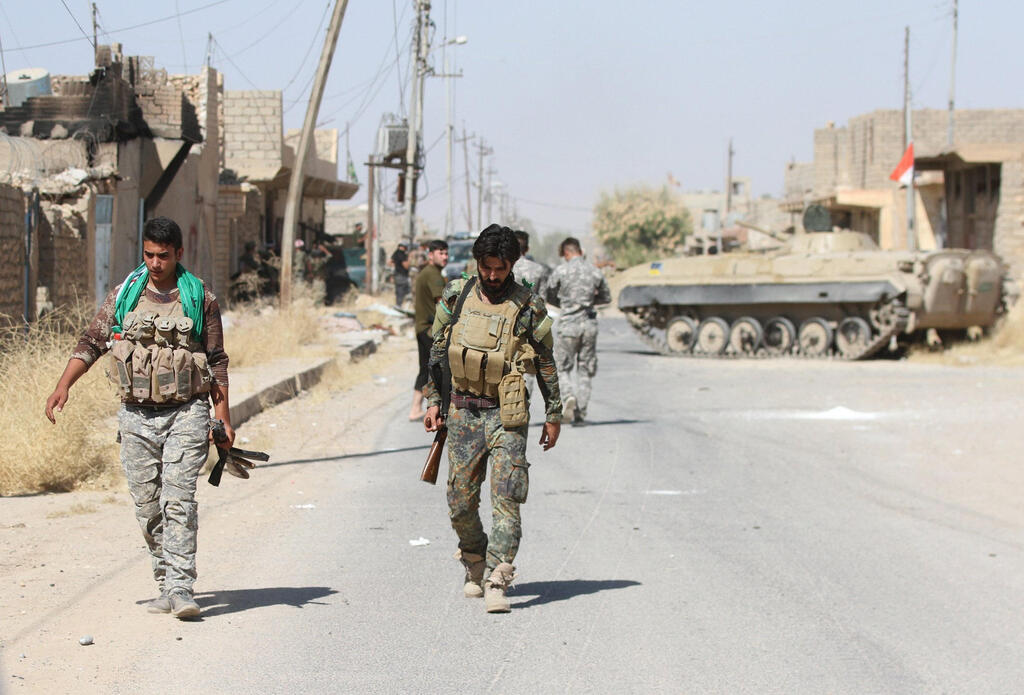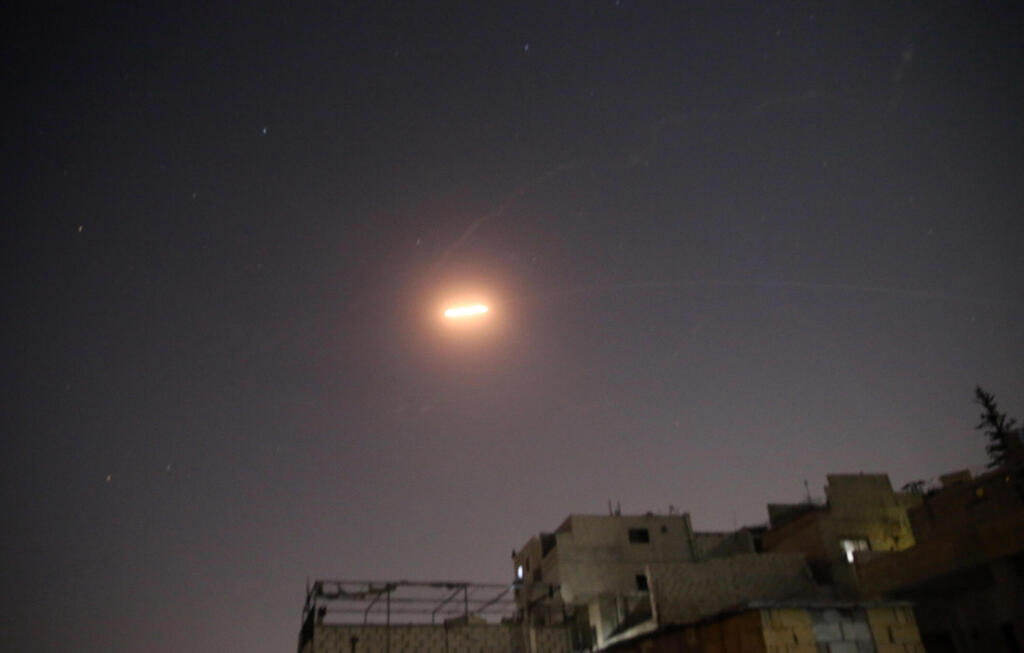Getting your Trinity Audio player ready...
The attack Wednesday night on American al-Tanf base in Syria indicates an uptick in Iran's Quds Force's actions in the region, and is perhaps also intended to pressure Washington, on a potential return to the 2015 nuclear deal.
Iranian TV reported Thursday that Tehran was conducting a major air force drill. According to the report, bombers, fighter jets, and attack and surveillance drones from all of the country's airbases participate in the exercise, just a week after holding another massive drill for Iran's air defense.
The direct attack against a Western coalition base in Syria, which was originally intended for the fight against ISIS, indicates that the war in Syrian, and the fighting between the various factions ithere, has transformed lately.
This transformation, according to Arab media reports, includes a change in Israel's patterns of activity in the area as part of the "war between wars" that is meant to stop Iranian entrenchment in Syria.
The Americans established the base in al-Tanf near the Syrian borders with Jordan and Iraq, as part of the international effort against the Islamic State. This is a small base with about 400 U.S. military personnel and civilians, and several dozen British and French military intelligence personnel tasked with gathering intelligence on the remaining forces of the caliphate.
Russia and the Syrian regime in Damascus oppose the U.S. presence at the base because it undermines their efforts to return Syrian President Assad to full territorial control. The target of this unusual attack was the United States, and it's safe to assume that an American response is imminent.
The al-Tanf base is defended by Syrian Kurdish forces, the YPG, a mainly Kurdish militia in Syria and the primary component of the Syrian Democratic Forces (SDF) who oppose Assad's regime. These forces are made up of Syrian Kurds from the region and Sunni Arab tribesmen.
After ISIS was defeated and the caliphate ceased to exist, the al-Tanf base continued to operate mainly for intelligence gathering and special operations against the Iran-backed Shiite militias operating in the service of the Revolutionary Guard Corps.
Those militias began to establish themselves in the area of al-Buchmal and Al-Qa'im, about 300 km northeast of al-Tanf, near the Syrian-Iraqi border, and on part of the land corridor Iran is attempting to control leading from the Islamic Republic, through Iraq and Syria all the way to Lebanon.
The late Commander of the Revolutionary Guards Quds Force Qasem Soleimani, who was assassinated by the Americans in 2020 decided to positioned his militias in the area.
6 View gallery
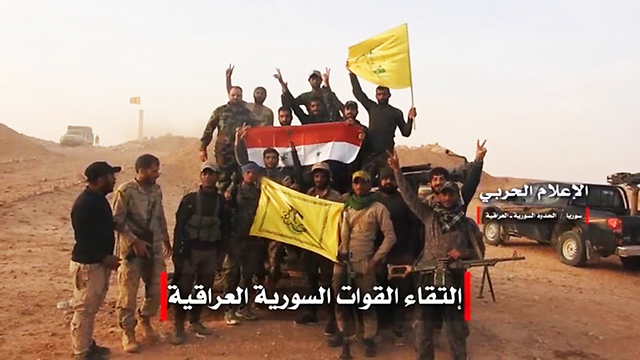

Iranian-backed militias in Syria waving the Hezbollah and Syrian flags
(Photo: Archive)
Both Israel and the U.S., according to international media reports, periodically attacked the Iraqi Shiite, Afghans, Pakistani and Syrian militias, who are sponsored and funded by the Revolutionary Guards.
After the assassination of Suleimani in January 2020, his successor, Ismail Kaani, continued to support of the militias in Syria, who attack U.S. forces using drones, rockets and IEDs.
But the small base of the al-Tanf remained unharmed, likely because it was being used to gather intelligence and launch strike against remaining ISIS forces and thanks to its geographic distance from the Iran-backed militia bases of operation, Those militias fear military confrontation with Kurdish-Syrian forces and any other armed groups located in and around the base.
The al-Tanf base was attacked for the first time on Wednesday probably in retaliation for strikes on the militias at Deir Ez-Sur, killing Syrian soldiers as well as militia men, a strike that was attributed to Israel and believed to have been launched from the base.
The "allies of Syria," a new group, swore to avenge the victims and the destruction caused in the strikes.
Syrian opposition attributed one missile strike on Deir Ez-Sur, carried out on September 15, to the American forces, a claim the U.S. denied. In all, four strikes against six Iranian backed militia targets and Syrian air defenses, emanated from the Al -Tanf base, causing Syrian casualties.
If, as some in believe, the strikes were carried out by Israeli aircraft or by IDF special forces, they had come after careful consideration. The eastern Syrian Desert region, has only a few air defenses, which are considered low-tech, and not a serious threat.
It is also possible that the few Syrian anti-aircraft batteries near the city of Tadmor, for example, were disabled when the unidentified aircraft attacked.
In the past, airstrikes attributed to Israel were carried out mostly from Lebanon, the Mediterranean Sea, or from Israeli territory, but in some cases, both the planes and the air-to-ground missiles that were launched had to overcome very new and very dense anti-aircraft defenses, all of which were Russian made, in central and western Syria, and especially around Damascus.
These defenses were able to intercept quite a few of the armed missiles launched by the attacking aircraft (hundreds of thousands of dollars worth), and in one case in 2018, an IDF F-16 was shot down in as it returned from Syria, to Israeli airspace.
There may also be a political reason for using al-Tanf as a launching pad for strikes. The attacks attributed to Israel in Syria embarrassed the Russians since their air defenses were unable to stop the attacks or the destruction caused, despite their claim to the contrary. Israel has often been successful in slowing Iranian efforts of entrenchment in Syria as well as the Lebanese based Hezbollah terror groups' precise missile project.
6 View gallery
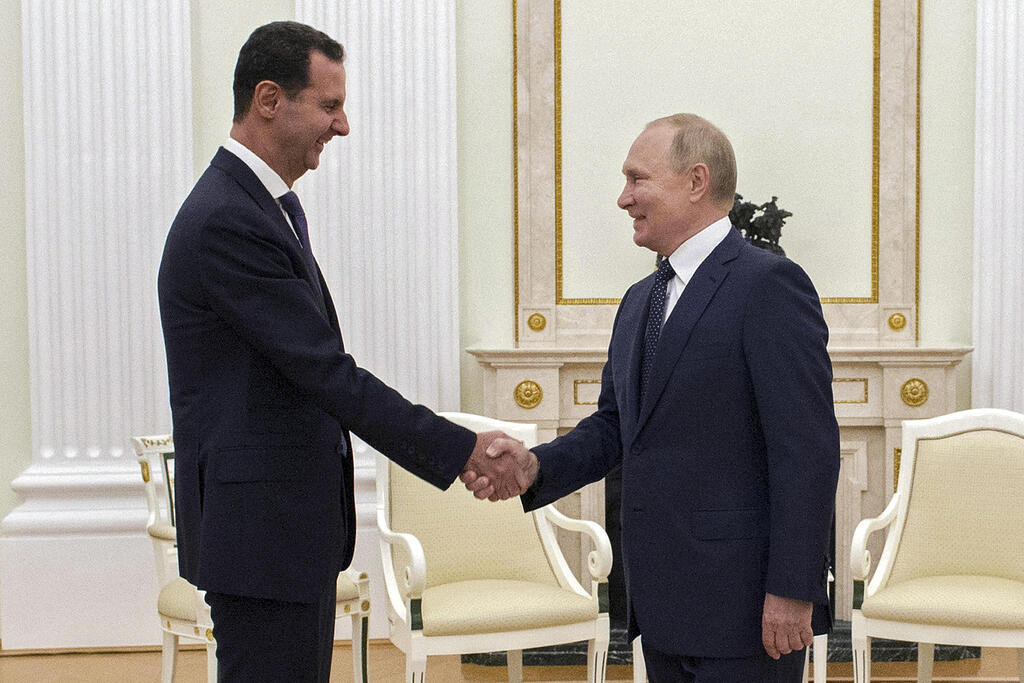

Russian President Vladimir Putin and Bashar Hafez al-Assad President of Syria
(Photo: AP)
Russia has an economic interest as well behind its claims that the Russian made air defenses were able to intercept attacking missiles and aircraft.
It is interested in selling its air defense systems and reports of their failures are detrimental to such efforts and harmful to the Russian Defense industry's reputation.
Whom ever launched strikes from the al-Tanf base, aimed to avoid causing further embarrassment for the Russian military, indicating that the decision to operate from that area, had military, political and economic considerations.
Iran understands the reasons behind the use of the secluded base. The attack against the base is a result of Tehran's shift in strategy, choosing to attack Western forces themselves, rather than sending their proxies to carry out the mission.



